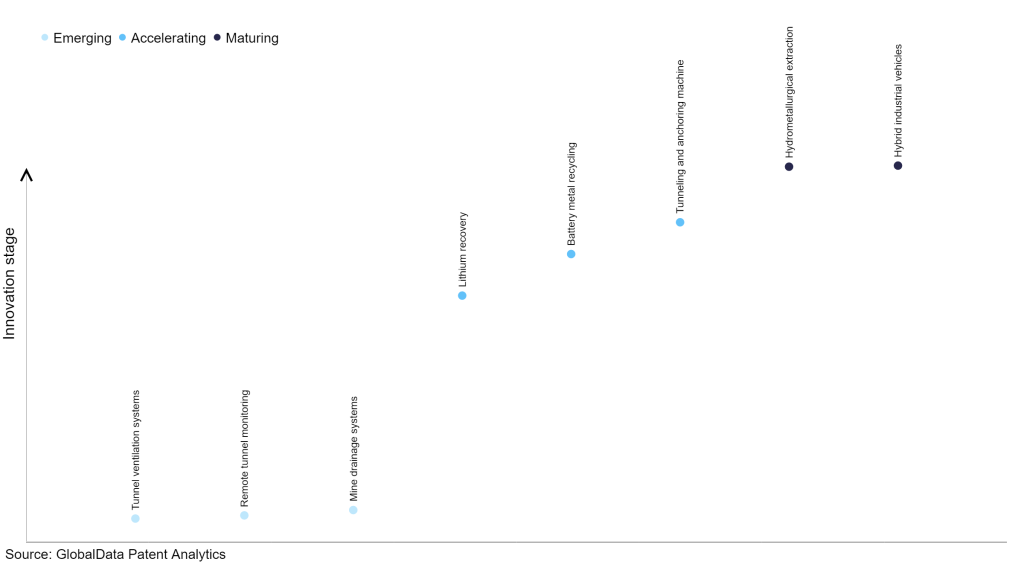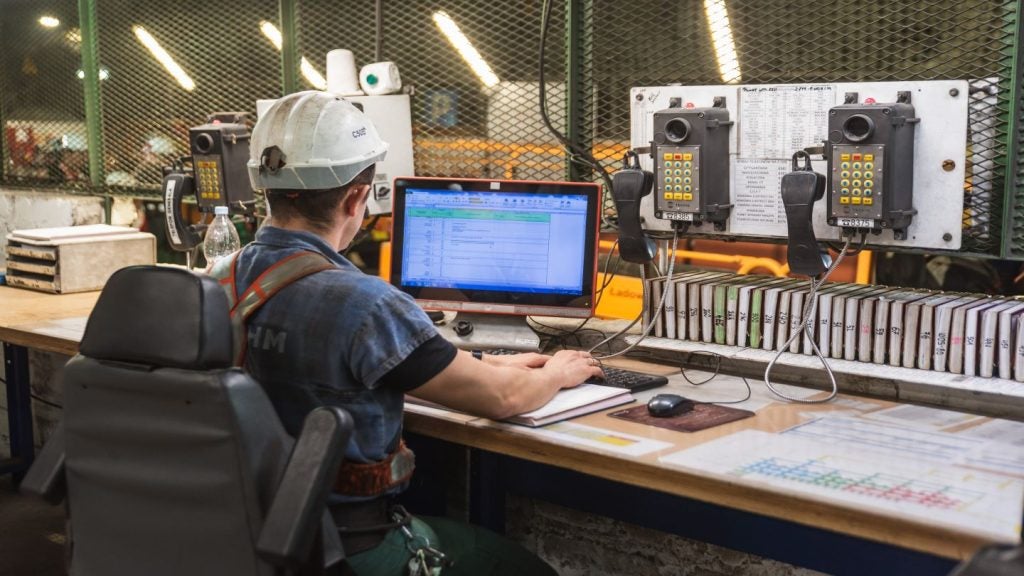The mining industry continues to be a hotbed of patent innovation. Activity is driven by the need to enhance safety, improve productivity and control costs, and the growing importance of technologies such as automation, 3D mapping and geomodelling, robotics and the Internet of Things (IoT). These technologies can improve the success of exploration activities, reduce the environmental impact of mining, improve productivity of operational mines, and, in the case of tunnel ventilation systems, enhance both safety and efficiency. In the last three years alone, there have been over 3,000 patents filed and granted in the mining industry, according to GlobalData’s report on Innovation in mining: emergency rescue systems. Buy the report here.
However, not all innovations are equal and nor do they follow a constant upward trend. Instead, their evolution takes the form of an S-shaped curve that reflects their typical lifecycle from early emergence to accelerating adoption, before finally stabilizing and reaching maturity.
Identifying where a particular innovation is on this journey, especially those that are in the emerging and accelerating stages, is essential for understanding their current level of adoption and the likely future trajectory and impact they will have.
45+ innovations will shape the mining industry
According to GlobalData’s Technology Foresights, which plots the S-curve for the mining industry using innovation intensity models built on over 81,000 patents, there are 45+ innovation areas that will shape the future of the industry.
Within the emerging innovation stage, tunnel ventilation systems, remote tunnel monitoring and mine drainage systems are disruptive technologies that are in the early stages of application and should be tracked closely. Lithium recovery, battery metal recycling and tunneling and anchoring machine are some of the accelerating innovation areas, where adoption has been steadily increasing. Among maturing innovation areas are hydrometallurgical extraction and hybrid industrial vehicles, which are now well established in the industry.
Innovation S-curve for the mining industry

Emergency rescue systems is a key innovation area in mining
The advancement of sensors has enabled devices, buildings, and clothing to become smart and connected. IoT solutions benefit all branches of emergency services in different ways. Mining operations use risk assessment processes to identify potential emergency events and circumstances. The mining site will need to consider the types of emergency equipment that can be used to mitigate the emergency as part of this process.
Emergency rescue equipment includes breathing apparatus, work at height equipment, confined space equipment, firefighting equipment, gas detection, rescue chambers and vehicles, and personal protective equipment to support the specific emergencies.
GlobalData’s analysis also uncovers the companies at the forefront of each innovation area and assesses the potential reach and impact of their patenting activity across different applications and geographies. According to GlobalData, there are 215+ companies, spanning technology vendors, established mining companies, and up-and-coming start-ups engaged in the development and application of emergency rescue systems.
Key players in emergency rescue systems – a disruptive innovation in the mining industry
‘Application diversity’ measures the number of applications identified for each patent. It broadly splits companies into either ‘niche’ or ‘diversified’ innovators.
‘Geographic reach’ refers to the number of countries each patent is registered in. It reflects the breadth of geographic application intended, ranging from ‘global’ to ‘local’.
[datawrapper id=pE0oy title='Patent volumes related to emergency rescue systems' type='lgp1']Sandvik, Epiroc, Atlas Copco, and Ministry of Education of the People's Republic of China are some of the leading patent filers in emergency rescue systems.
Atlas Copco’s Automatic Monitoring and Extinguishing System employs smoke and heat detectors through a voting system to first shut down the engine or prime mover and when necessary, extinguish the source of the potential hazard with CO2.
In terms of application diversity, Dongguan Lianzhou Intellectual Property Operation Management leads the pack, while The 2nd Engineering of China Railway 12th Bureau Group and Huainan Mining Group stood in the second and third positions, respectively. By means of geographic reach, Henan Energy and Chemical Industry Group held the top position, followed by Korea Expressway and State Grid Hebei Electric Power Supply.
To further understand the key themes and technologies disrupting the mining industry, access GlobalData’s latest thematic research report on Mining.









